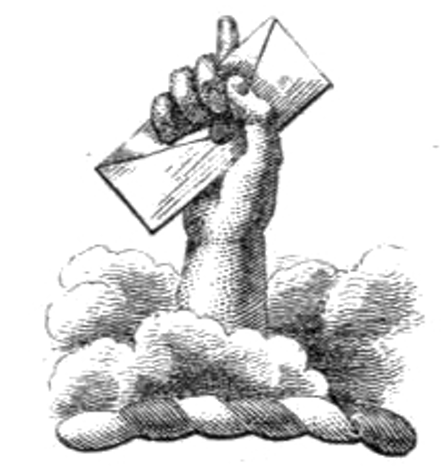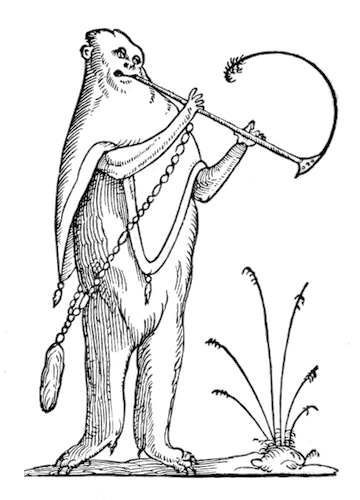
Uncommon Sense: Edward B. Foote’s Plain Home Talk (1896 edition)
In 1876, the “Centennial year”, when patriotic Americans were celebrating the nation's progress, the physician Edward Bliss Foote (1829–1906) found himself at odds with his country’s obscenity laws. As he explained, sardonically excusing a major omission in Plain Home Talk, his encyclopedic tome of health advice: “The author of this work was compelled by the laws of his country to expurgate so much of this essay as in any way related to mechanical devices for the prevention of conception. . . . He would beg his readers to excuse him from giving any advice upon this subject until there is a change in our Congressional and State laws.”
Despite these legal challenges (Foote ultimately paid $5000 in fees arising from obscenity laws), it was his refreshingly direct approach to “medical common sense” that drew such a wide readership. First published in 1858, this remarkably popular medical guide expanded from 300 to almost 1000 pages by its third edition in 1896. Featuring more than 200 illustrations, Foote's work reached over half a million copies in print, making him one of the most widely read medical authors of nineteenth-century America. The same frankness that saw his earlier writing on contraception run afoul of Anthony Comstock, the anti-obscenity crusader, made his coverage of all aspects of human health — disease and diet, marriage and relationships, sex and child rearing — not just helpful, but entertaining. A century later, Foote's “plain talk” remains undeniably funny, most often intentionally so.
Plain Home Talk is much more than a medical text. Practical and prescriptive, its common sense advice spans an impressive range of topics, from matchmaking and clothing to exercise and education. Every recommendation comes with clear, if sometimes questionable, justification. Why should school boys be prevented from headstands? Because the activity can “congest the brain”, a potentially fatal risk. On the dangers of excessive study, cautions Foote, “the mind may be overloaded as well as the stomach”. The proof is all around. “The back doors of many of our colleges and seminaries open into lunatic asylums and cemeteries”, he writes. “The literary world is full of physical wrecks.” Studying has to be approached with the same restraint as eating or drinking, if we are to staunch the university’s flow of “mental dyspeptics into the world”.
The book’s many etchings capture the physical effects of unhealthy habits and bad customs. Melancholy appears as a man with a furrowed, lycanthropic brow; the unnatural separation of the sexes is embodied in “The Isolated Girl”, with dark, frowning eyes. “The sexes cannot maintain perfect health in isolation”, Foote insists, noting that “nuns are seldom if ever vigorous looking”. Temperance is the rule in all things: in drinking alcohol, using tobacco, and even in taking medicine. Foote’s principle of moderation extends to diet too. Acknowledging that “facts sustain the vegetarian”, he reserves particular disapproval for eating pork. “Both man and hog are intemperate eaters, and addicted to filthy habits,” writes Foote, a parallel drawn out in the accompanying illustration.
As his distaste for American obscenity law suggests, Foote’s aims were not limited to dispensing medical advice. He was also an outspoken advocate for social reform. To pick apart what he viewed as Western hypocrisy, Foote often looks beyond his immediate world. His essays on marriage verge on the sociological: they are ambitious, and orientalist, comparisons of wedlock across time and culture. His position is one of radical tolerance, advocating for the legality of “complex marriage and polygamy”, for “the polygamic system is nearly as old as the world, and the monogamic system is at least two thousand five hundred years old, and the society-makers certainly have not yet attained any very gratifying results in their efforts at perfecting the morality, health, and happiness of the people living under them”, argues Foote, much less at ending adultery and prostitution.
He also emerges as a staunch advocate for women’s rights. “I will only advise, nay, urge women to crowd themselves into all business pursuits for which they are physically qualified”, he writes. “Any thing and every thing to the end that women may become less dependent upon their ‘legal protectors’”. To critics of female doctors, he suggests the following “infallible prescription”: mix “Common Sense” with “Justice” and “Mind your business”, and take “every five minutes when the question disturbs your conservative mind, until relieved”.
Ultimately, Foote’s practical advice is part of a larger project: denaturalizing Western customs and exposing their harms, which are typically framed as physical ailments. The result is a wide-ranging critique of Western social practices. He condemns not only the “evils of tight lacing” but of “close dressing” in general (“a very large proportion of the men and women of civilized countries may be said to be ‘hide-bound;’ that is, the pores of the skin have become closed and gummed up by the exhalations of the skin”). As for the “bigotry of Fashion”, Foote wryly observes, “Flora McFlimsy laughs at the idea that some women in barbarism wear rings in their noses, but in the very act of doing so shakes the glittering jewelry which hangs pendant from her own ears!” Foote’s particular distaste for hypocrisy emerges throughout: from the powdered and painted woman’s criticism of tattoos to temperance advocates who, “by eating distillery-fed pork”, “actually consume second-hand liquor”.
If his social messages were prescient, Foote’s science reflects his era’s limitations. His medical exposition is unified by a theory of “animal electricity”, a force that energizes the human body and leaks from its pores. Electricity provides a helpful metaphor for his lay reader’s understanding of physiology: “the nerves telegraphic wires / how the mind sends its telegrams . . . the brain a reservoir of electricity / the stomach a galvanic battery”. But Foote was also a staunch believer in the power of hypnotism and mesmerism, and in the healing power of “magnetism”. His conviction in the vital power of animal electricity is also the reason for his peculiar disapproval of bed sharing, whether between husband and wife or between the old and the young. “Children, compared with adults, are electrically in a positive condition”, explains Foote. “But when, by contact for long nights with elder and negative persons, the vitalizing electricity of their tender organization is given off, they soon pine, grow pale, languid, and dull, while their bed companions feel a corresponding invigoration.” Electricity, for Foote, is apparently a zero-sum game.
Enjoyed this piece? We need your help to keep publishing.
The PDR is a non-profit project kept alive by reader donations – no ads, no paywalls, just the generosity of our community. It’s a really exciting model, but we need your help to keep it thriving. Visit our support page to become a Friend and receive our themed postcard packs. Or give a one-off donation. Already a supporter? A huge thank you for making all this possible.
Apr 1, 2025









